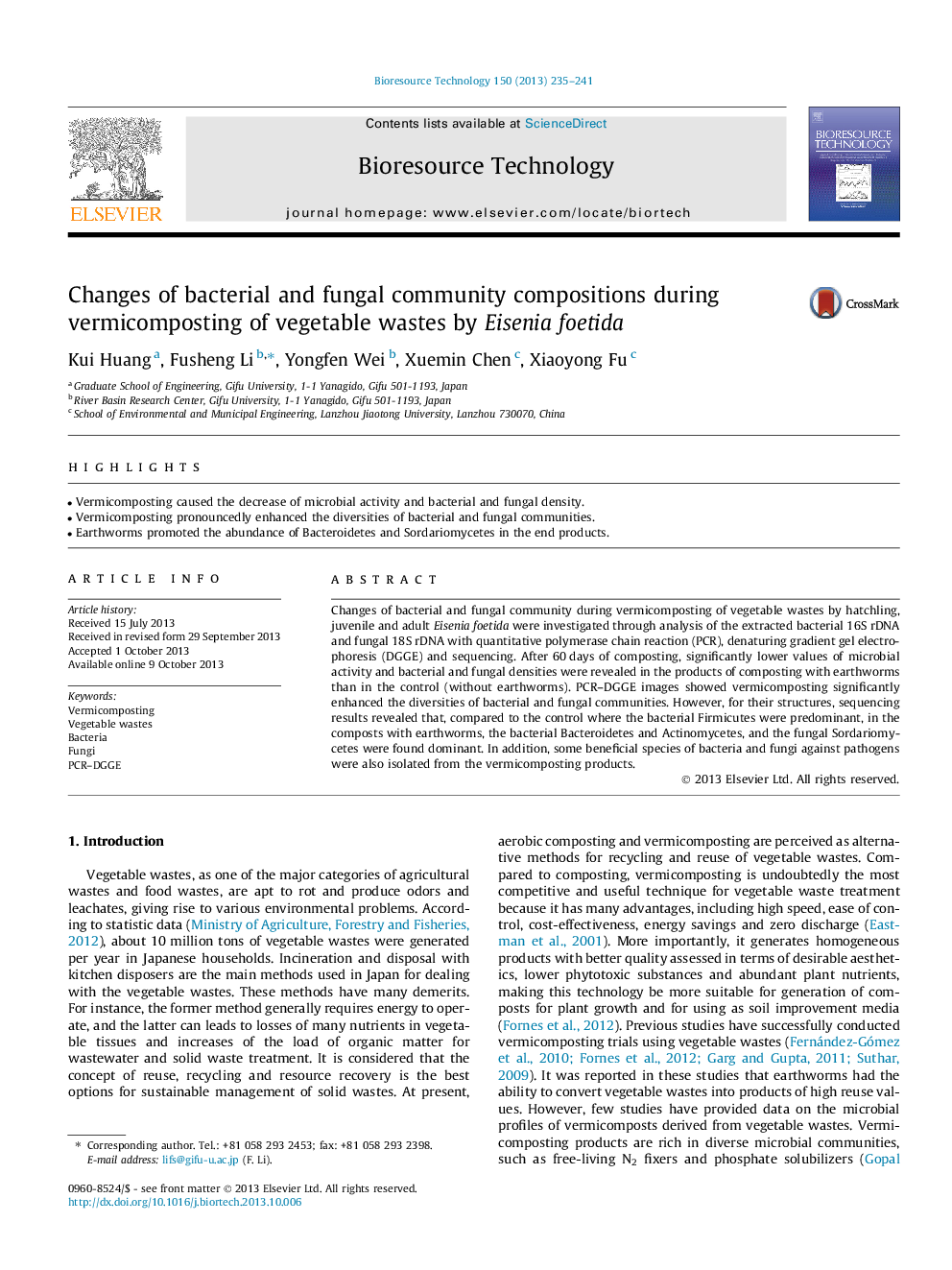| Article ID | Journal | Published Year | Pages | File Type |
|---|---|---|---|---|
| 7079270 | Bioresource Technology | 2013 | 7 Pages |
Abstract
Changes of bacterial and fungal community during vermicomposting of vegetable wastes by hatchling, juvenile and adult Eisenia foetida were investigated through analysis of the extracted bacterial 16S rDNA and fungal 18S rDNA with quantitative polymerase chain reaction (PCR), denaturing gradient gel electrophoresis (DGGE) and sequencing. After 60Â days of composting, significantly lower values of microbial activity and bacterial and fungal densities were revealed in the products of composting with earthworms than in the control (without earthworms). PCR-DGGE images showed vermicomposting significantly enhanced the diversities of bacterial and fungal communities. However, for their structures, sequencing results revealed that, compared to the control where the bacterial Firmicutes were predominant, in the composts with earthworms, the bacterial Bacteroidetes and Actinomycetes, and the fungal Sordariomycetes were found dominant. In addition, some beneficial species of bacteria and fungi against pathogens were also isolated from the vermicomposting products.
Related Topics
Physical Sciences and Engineering
Chemical Engineering
Process Chemistry and Technology
Authors
Kui Huang, Fusheng Li, Yongfen Wei, Xuemin Chen, Xiaoyong Fu,
